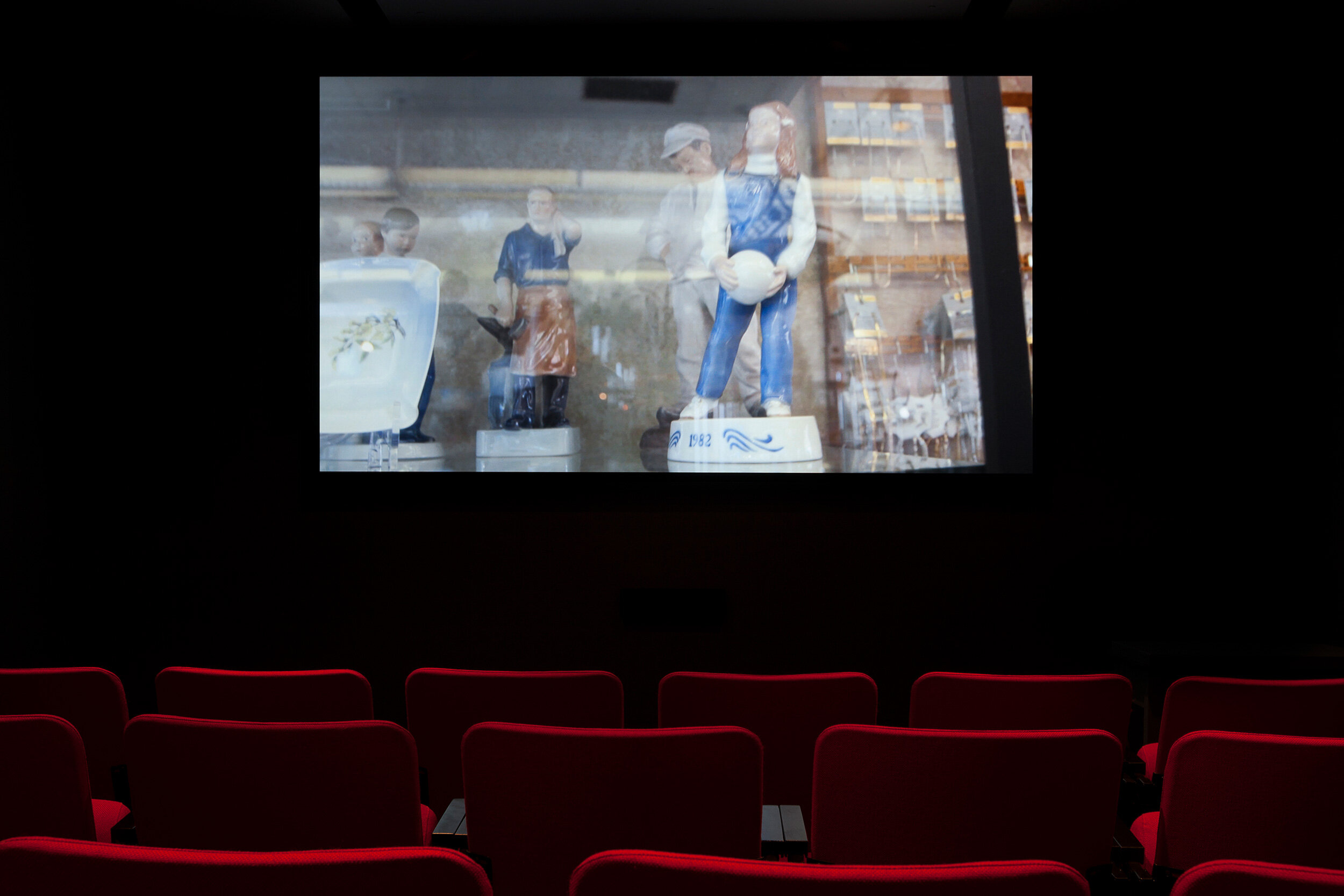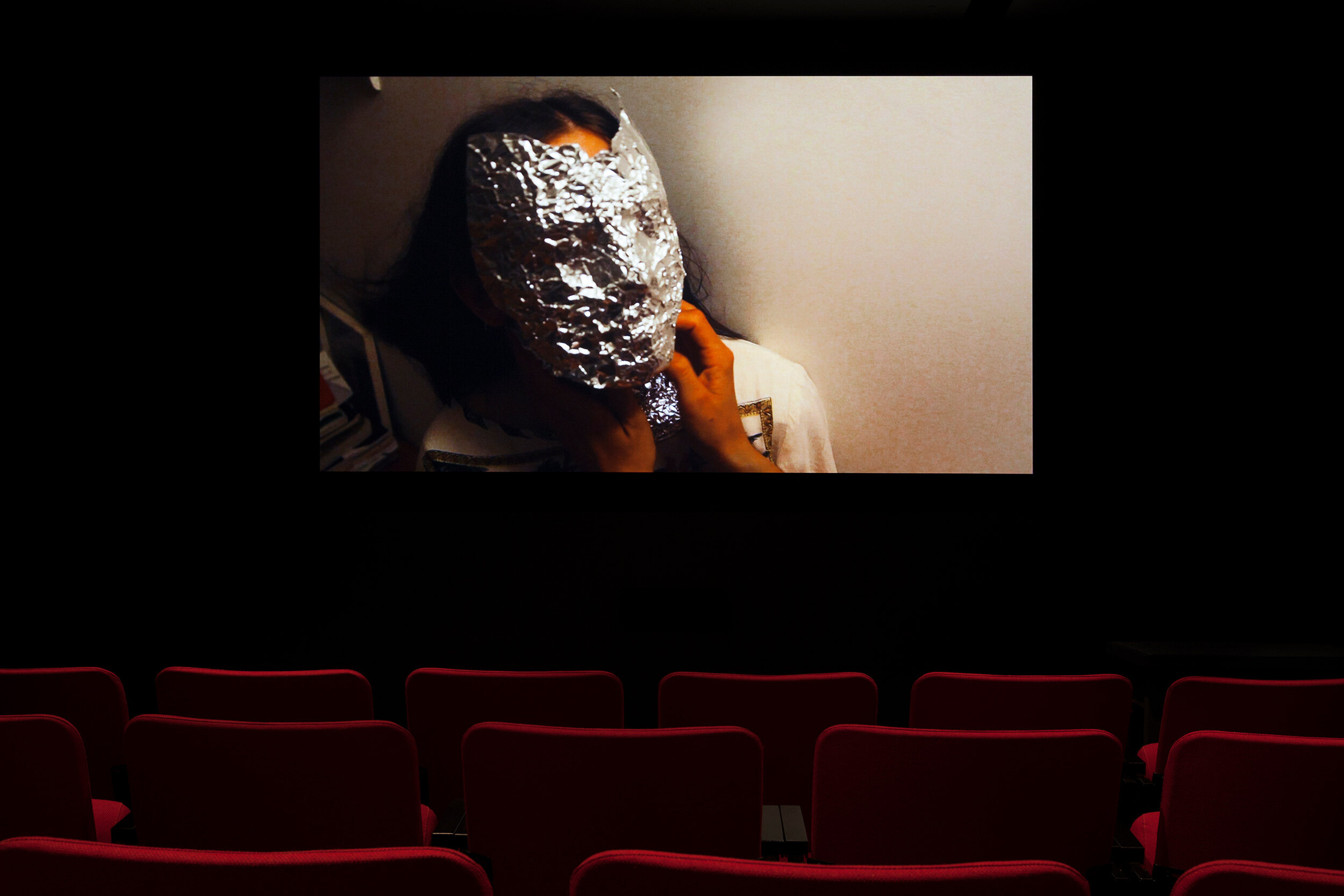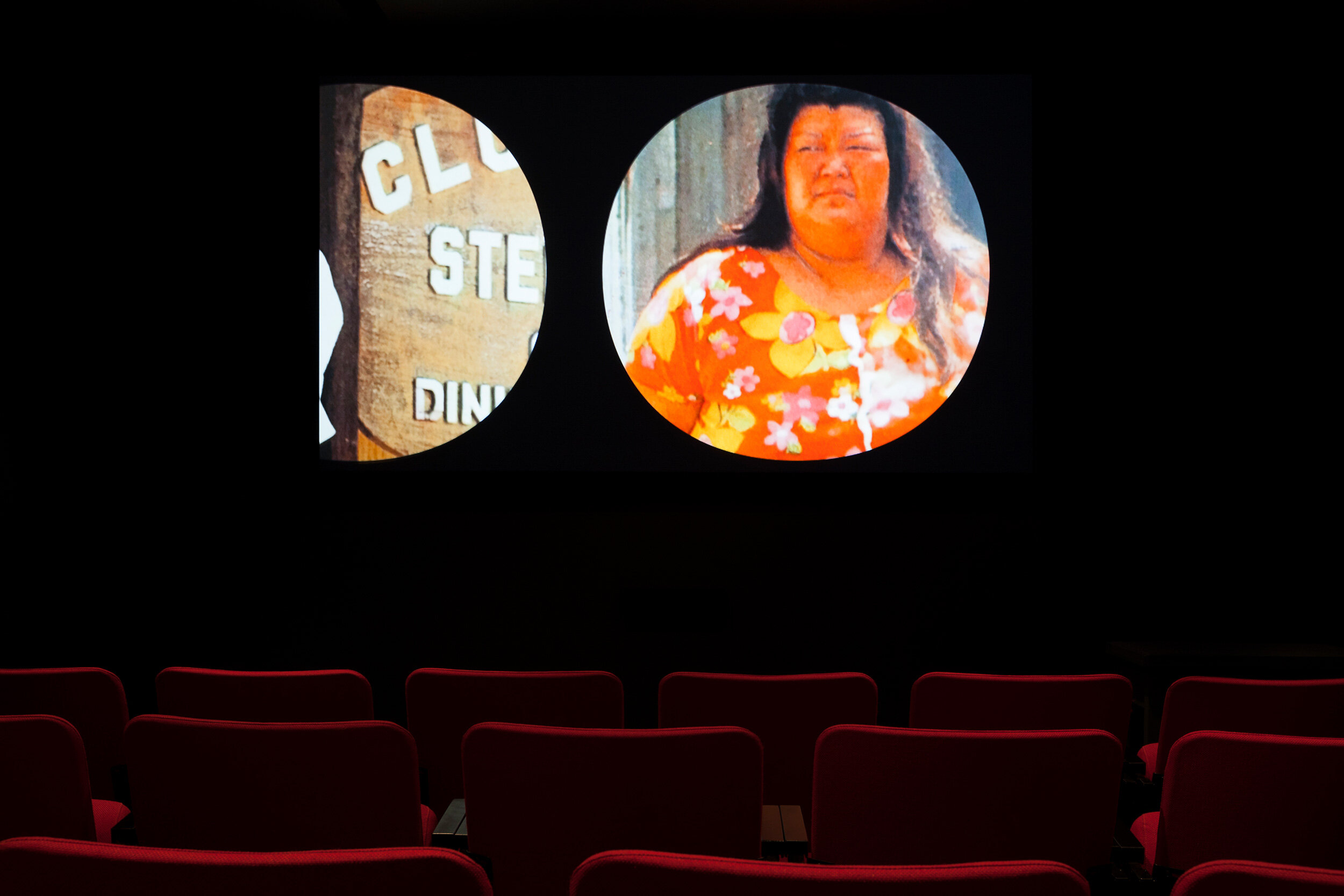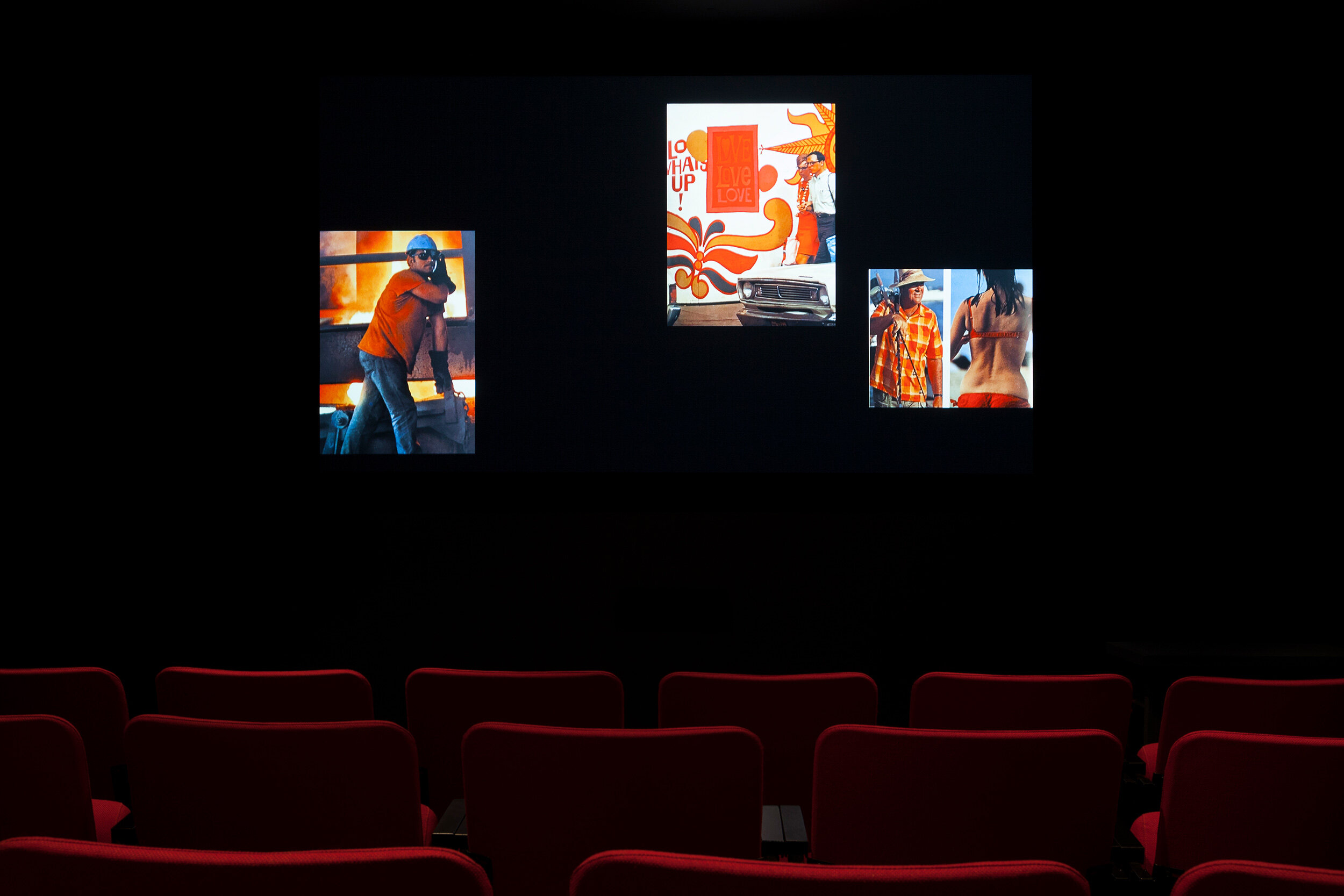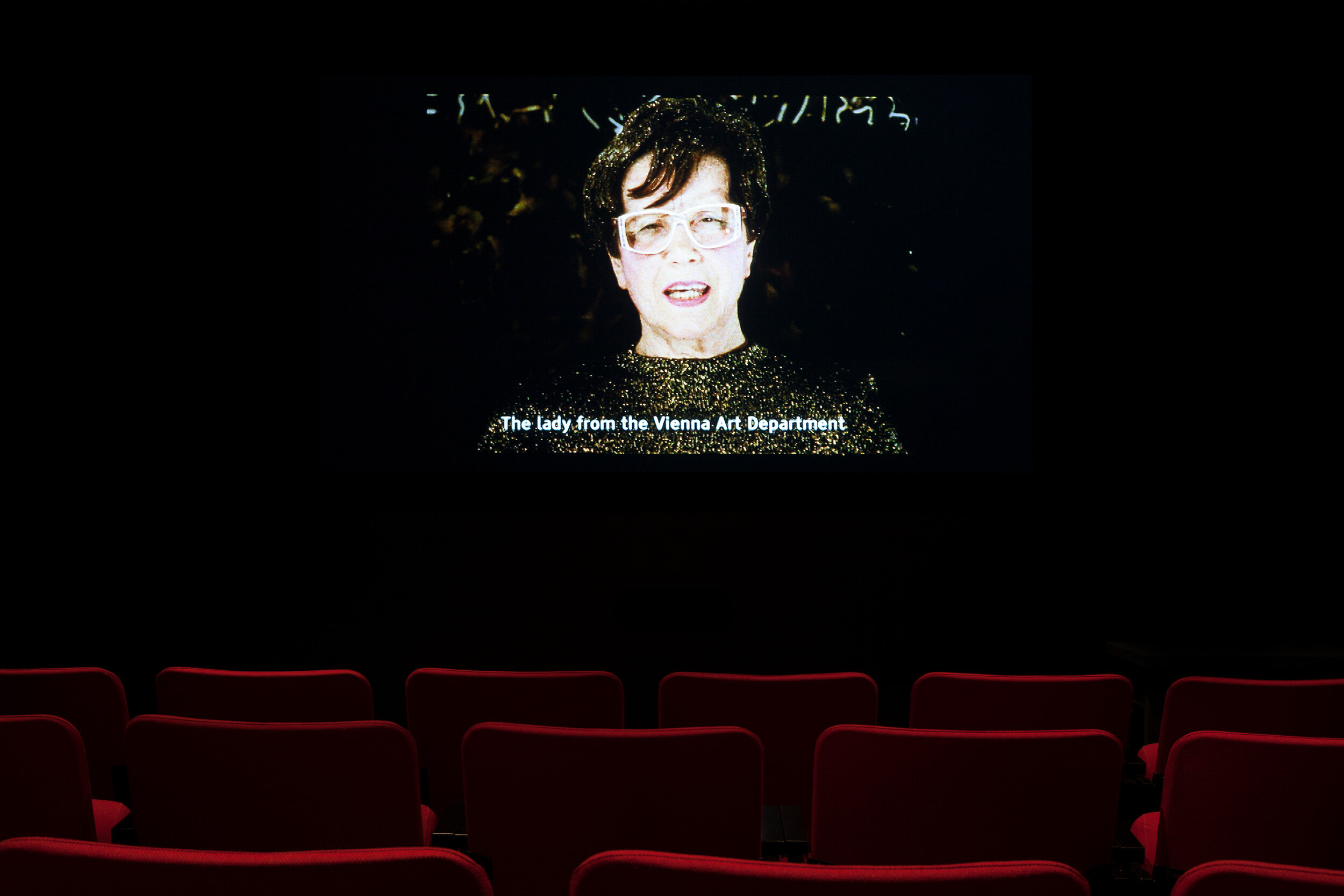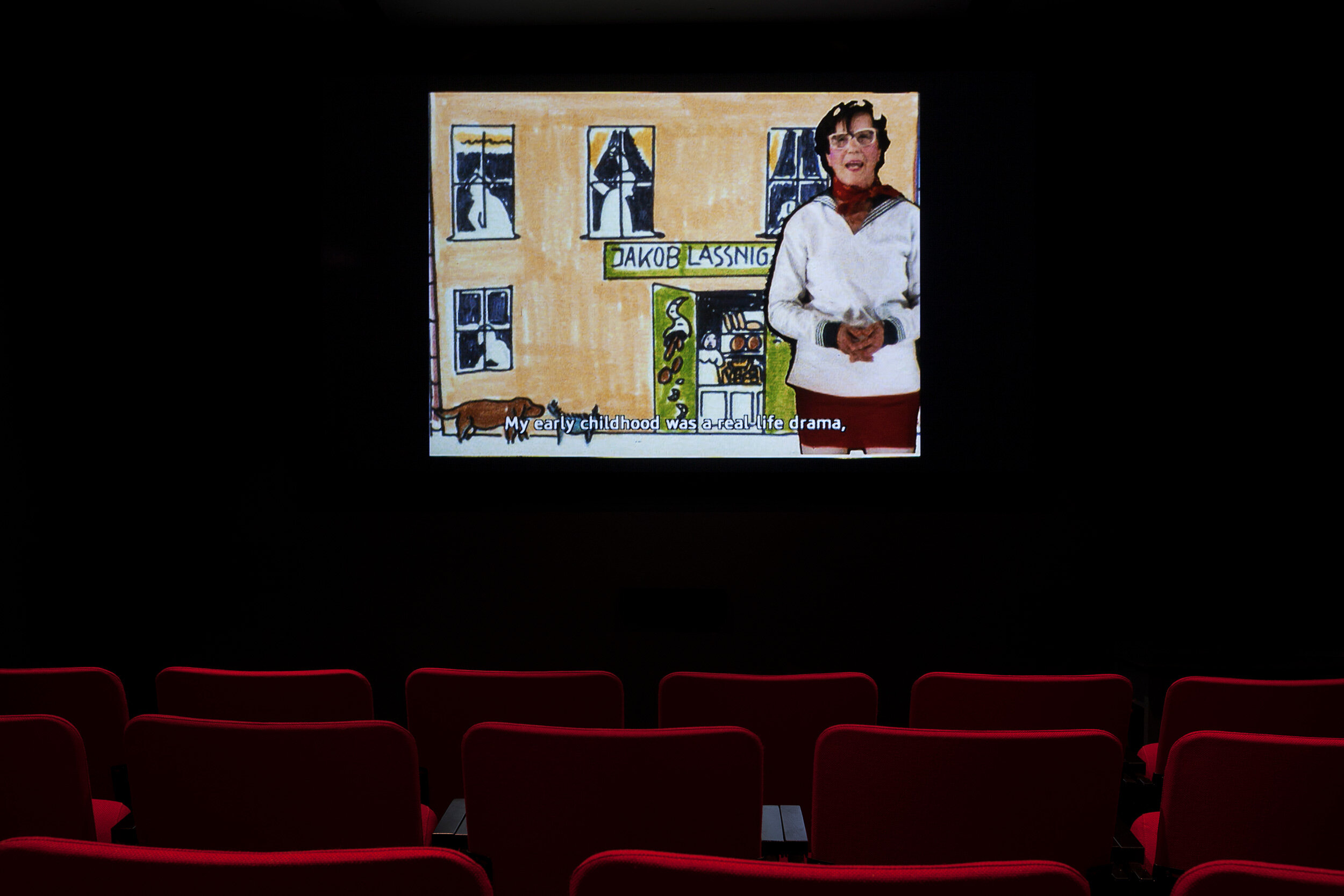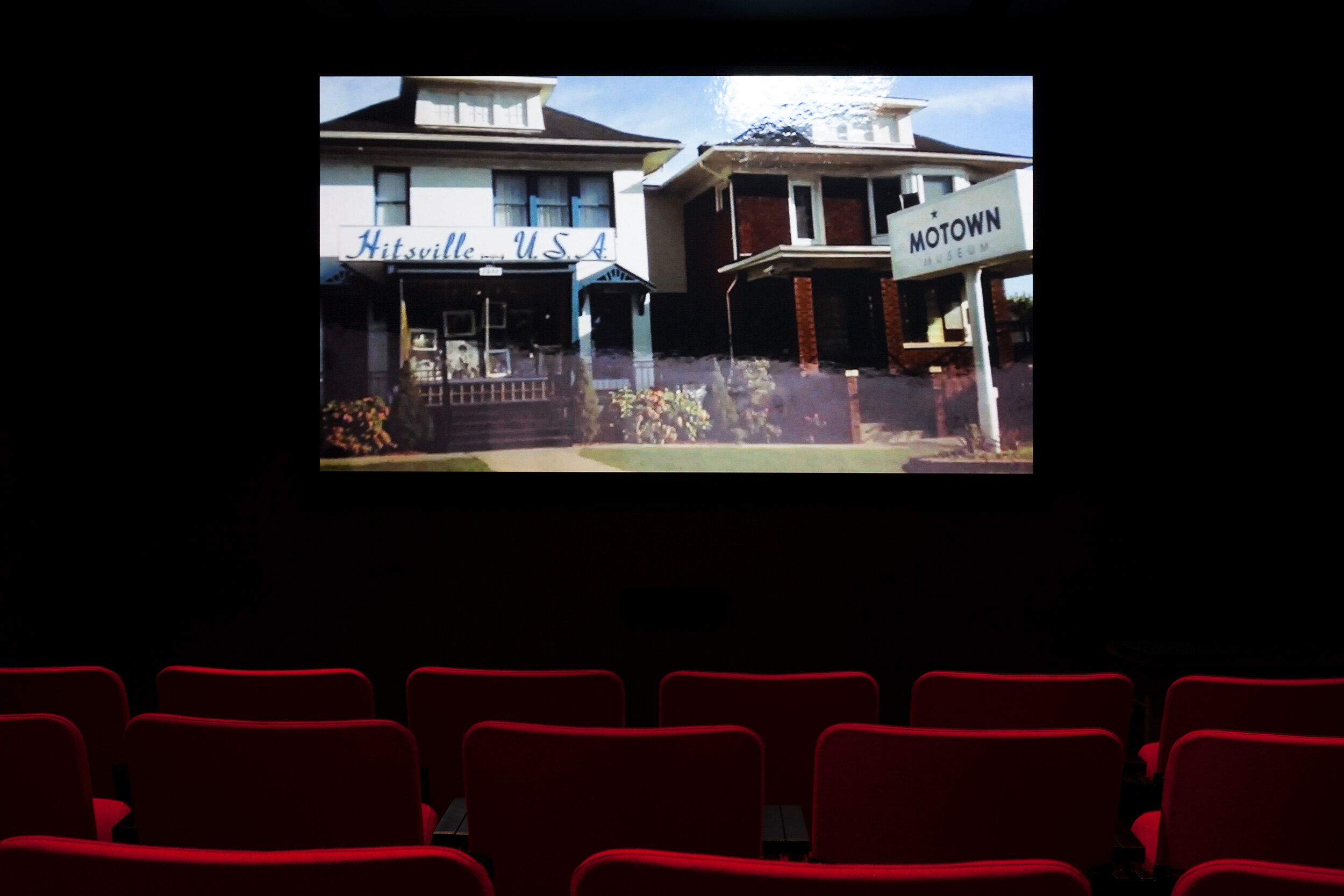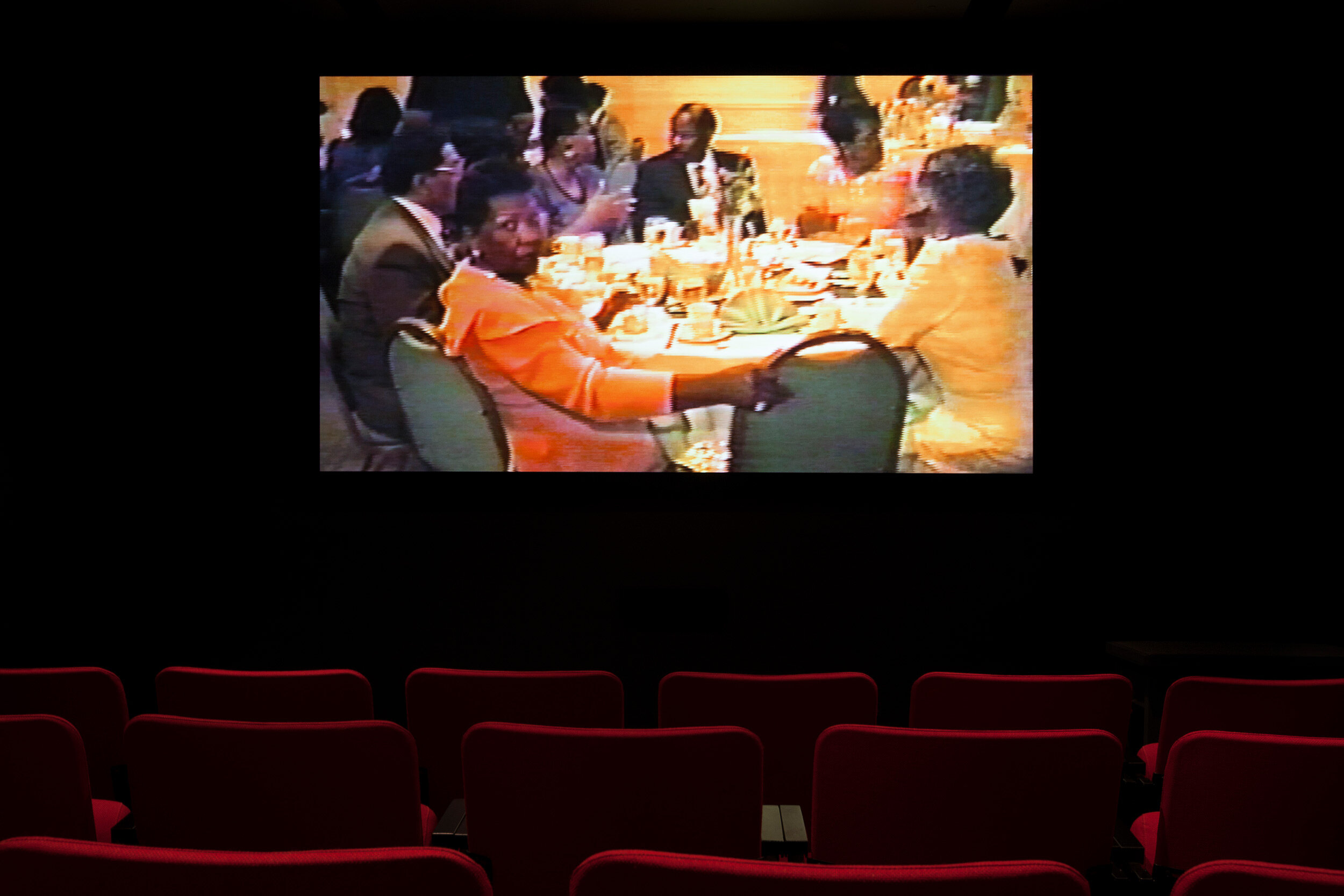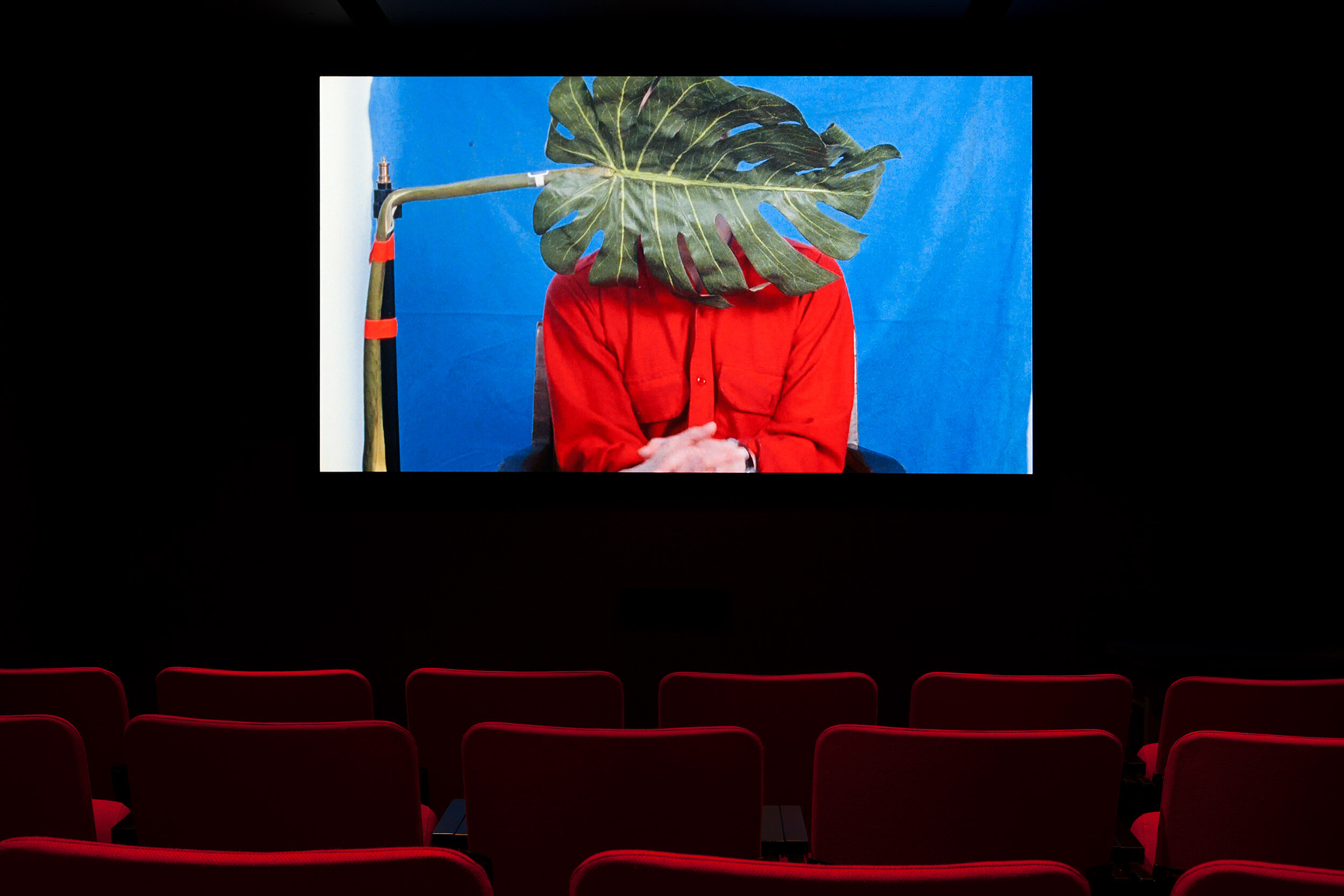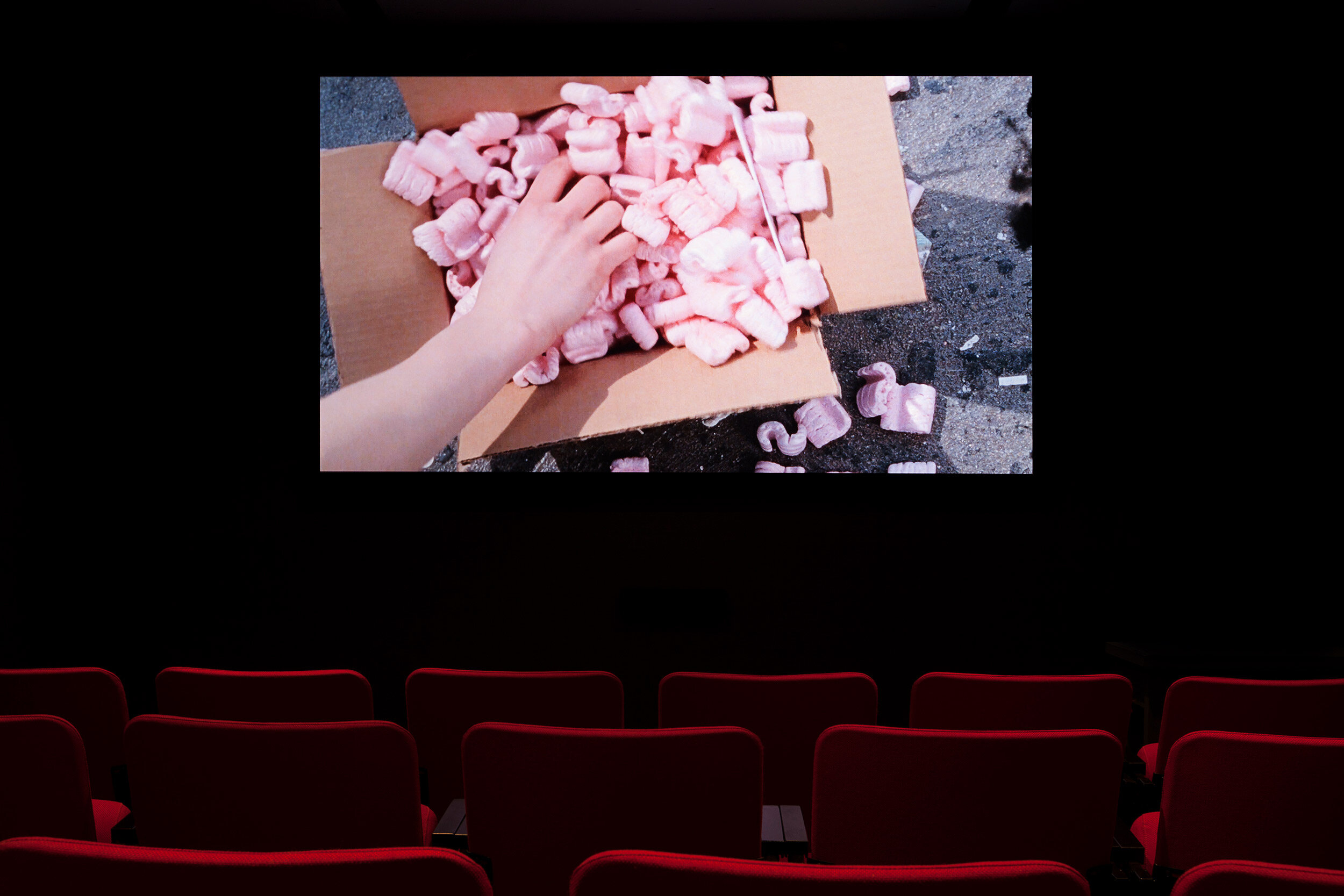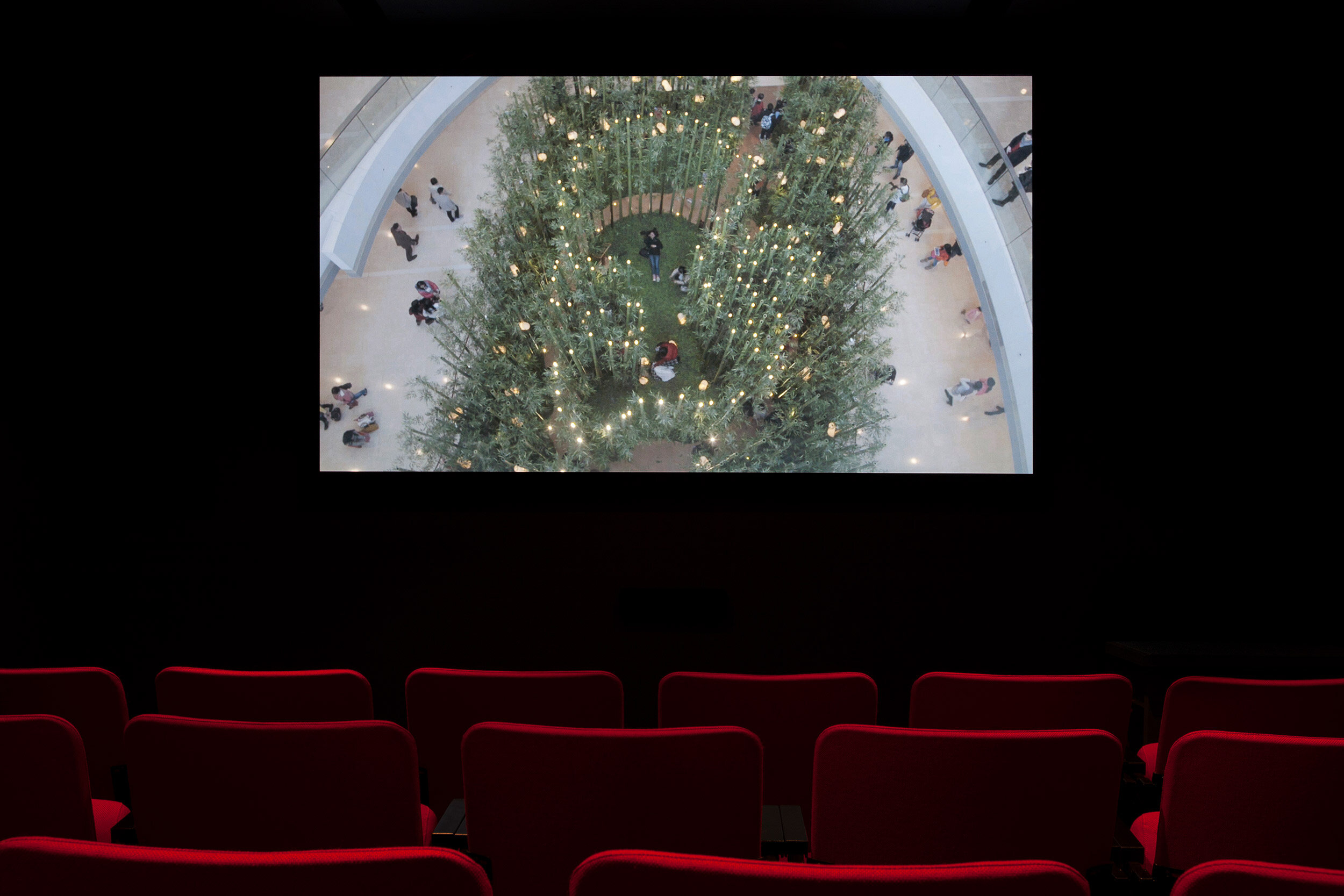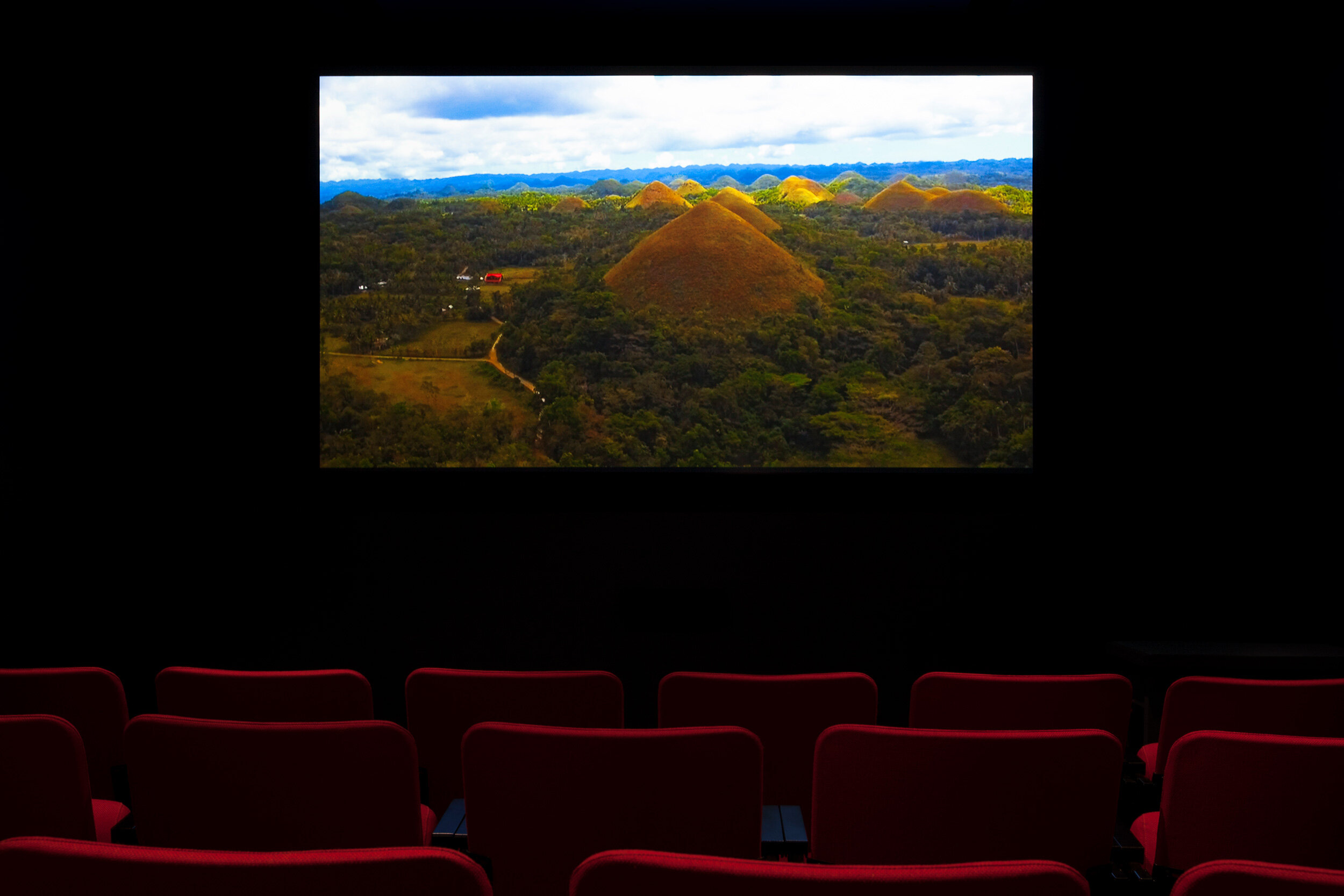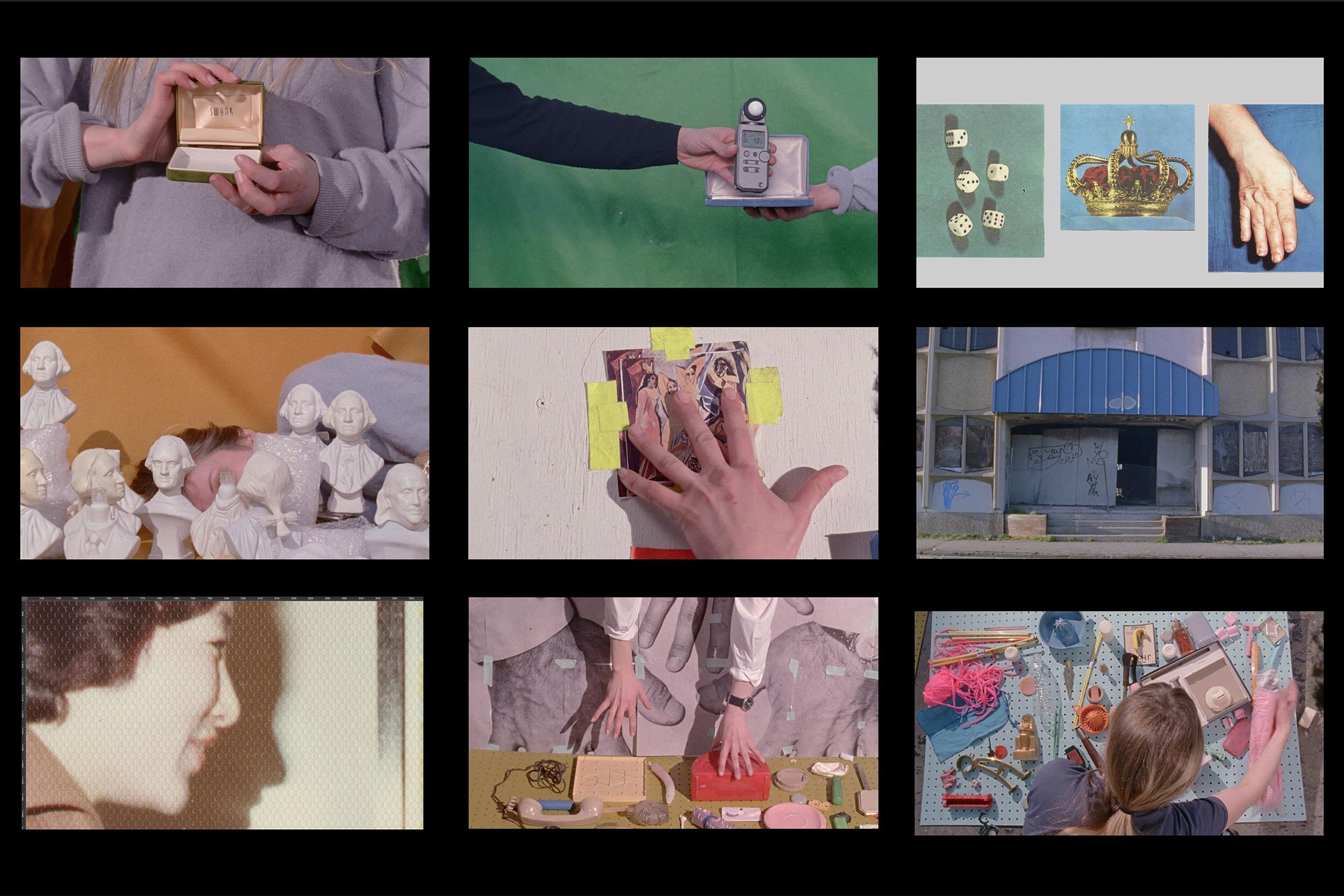I am the Organizer of My Own Archive
Stephanie Comilang, Sara Cwynar, Maria Lassnig, Dylan Mira, Krista Belle Stewart and Martine Syms
Curator: cheyanne turions
From February 2 to April 1, 2017
Opening on February 2 at 7 pm
Our memories fool us when they seem to play as movies in our minds. What is left of our living is something more akin to a box of photographs — ruffled through, their order lost or barely held together. What we take for these movies are
re-compositions of these still images into the narratives of our lives, a process of sense making that is self-making too. Quoting a line of dialogue from the program,(1) I am the Organizer of My Own Archive presents a range of tactics for coming into relation with the remnants of personal and social histories, emphasizing the interpretive liberty at play in any project that aims to coax sense from isolated objects or recollected experiences.
To tell the story of oneself is to map the ways that desire has been supported or thwarted by social mores. Maria Lassnig’s Maria Lassnig Kantate (1992) shows a vivacious 73-year-old woman making sense of her artistic ambition through a reflection on the struggles that produced her career. A highly accomplished painter (though not generally recognized as such until even later in her life), Lassnig here turns to animation and song as a way of exercising self-determined revisions to the biographical stories that are told about women, and women artists in particular.
The artifacts produced for living — the goods constructed, consumed and eventually discarded — circulate according to overlapping and sometimes opposing systems of value. Sara Cwynar’s Soft Film (2016) follows the trajectories that these competing forces produce for specific kinds of second-hand merchandise, mapping how a single thing can be drastically reconsidered dependent upon the power relations that structure its resting context. Working primarily as a photographer, this media work of Cwynar’s literally sets her practice in motion, asking what difference circulation and collection make to the meaning we derive from objects.
Sometimes we take narratives we have been given and we reinvent them for our own purposes, knowing that stories shape us, whether we write them or not. Krista Belle Stewart’s Where the Water Boils (2017), in its premiere at Dazibao, appropriates images from paper encyclopedias, cutting them into countless small pieces and recomposing them as counter-narratives to the stories they were intended to illustrate. Stewart is responding to a history of ethnographic research being used against its subjects: instead, she puts these documents of record into the service of revisionist imperatives, authoring social histories to her own intimate devices.
And yet, exercises in arranging experience do not always produce narrative clarity. Dylan Mira’s A Woman is Not a Woman (2015) acknowledges that sometimes the sense that comes from organizing an archive resists chronology and coherence. In Mira’s case, what rises from her collecting of seemingly disparate threads is what she calls a diffracted representation of history that coalesces into a decolonial research project. When systems are undone, old ways of knowing no longer produce reliable results, and in this rupture, new ways of being seep through.
One reliable way of making space is by bringing together, by manifesting a critical mass that pushes away or simply disregards what had been there before. Using found footage, clips from her family’s home movies and original material, Martine Syms’s Lessons (2014—) is a visual poem in progress —intended to reach 180 sections when complete, but presented here in its first 60 parts — composed of 30-second video clips that each articulate a life lesson. Syms demonstrates inheritance as a material and philosophical concept that reaches across personal and civil frameworks. In her collecting together and making public of these lessons, she experiments with gravity: in their proximity, these lessons, as representations, make a way of being possible, as reality.
Although the materials that make an archive carry traces of past lives, it is also possible that they can anticipate things to come. Stephanie Comilang’s science-fiction documentary Lumapit Sa Akin, Paraiso (Come to Me, Paradise) (2016) presents the care and creativity of Filipina migrant workers in Hong Kong as a way of envisioning a future-tense alien civilization where collectivity is its own kind of technology. Under this regime, the urban and digital aspects of public space align, positioning care and communication as the materials of archives, organized in order to sustain.
All this to say: archives are not passive receptacles of what traces remain after emotional and physical deterioration have taken their toll. Through these collections, stories both personal and political take shape, each tale indexed to power and privilege. I am the Organizer of My Own Archive foregrounds the recuperative force of articulating experience from a felt position within the social forces that hold our personal lives. These artists, in utilizing various kinds of collage practices, reconfigure their photographic troves of memory and inheritance in order to refute hard and soft misogyny, to claim radical traditions as their own, to conjure futures otherwise. What better than to speak for oneself — and to have that be the record of what has been and the ground for what will come.
— cheyanne turions
PROGRAM
Starts at noon — 1:45 pm — 3:30 pm
+ 5:15 pm (Thursdays only)
Maria Lassnig, Maria Lassnig Kantate (1992) — 7 min. 35 sec.
Sara Cwynar, Soft Film (2016) — 7 min. 06 sec.
Krista Belle Stewart, Where the Water Boils (2017) — 3 min. 26 sec. (silent)
Dylan Mira, A Woman is Not a Woman (2015) — 22 min.
Martine Syms, Lessons (2014—) — 30 min.
Stephanie Comilang, Lumapit Sa Akin Paraiso (Come to Me Paradise) (2016) — 25 min. 46 sec.
(1) The title of the program is taken from Sara Cwynar’s Soft Film (2016).
Stephanie Comilang is a Filipina-Canadian artist living and working in Toronto and Berlin. She holds a BFA from the Ontario College of Art & Design. Her documentary-based work looks at the cultural and social factors that shape an environment. Her work has been presented in exhibitions and at festivals in Canada, Europe and Asia. Her most recent film, a science fiction documentary entitled Lumapit Sa Akin, Paraiso (Come To Me, Paradise) has been screened at Asia Art Archive in America, New York; at SALTS, Basel; and at 8-11, Toronto. She has upcoming screenings as part of DGTL FMNSM, Dresden, Germany; as well as a solo show in 2017 at Artspeak, Vancouver.
Born in Vancouver, Sara Cwynar currently lives in Brooklyn and holds an MFA in photography from Yale University. Her composite videos and photographs of found objects and images court feelings of time passing. Using studio sets, collage, and re-photography, she produces intricate tableaux that draw from magazine advertisements, postcards, or catalogs. Her work has been presented in numerous exhibitions in Canada, United States and Europe, including the recent exhibitions L’Image Volée at Fondazione Prada, Milan; Greater New York at MoMA PS1, New York; and Under Construction – New Positions in American Photography at Pioneer Works, Brooklyn. Cwynar’s first book, Kitsch Encyclopedia was published by Blonde Art Books in 2014.
Maria Lassnig (1919–2014) is considered one of the most significant artists in Austrian contemporary art. Over the course of her 60 year long career, she created a substantial body of work in the fields of painting and graphics as well as in film and sculpture. Lassnig conducted a focused dialogue with her art, which always constituted the pivotal strand of her life. The key notion which came to characterize Lassnig’s work was above all the concept of body awareness: by introspectively discovering the true nature of her own condition, she expressed physical sensations through the use of artistic media. Her work was widely shown in numerous solo and group shows: The Museum of Contemporary Art, Los Angeles; Serpentine Gallery, London, UK; documenta 7, Kassel, Germany; Centre Pompidou, France; and at Tate Liverpool, London, UK; among other venues. She represented Austria at the 39th Venice Biennale.
Dylan Mira grew up between the Midwestern United States and East Asia and now lives in Los Angeles. She holds an MFA from UCLA and her work records affect and accident, considering information from a multiplicity of perspectives to question legibility and the automatic texture of the unknown. Her projects have been presented at venues including LAXART, Hollywood; Leonard and Bina Ellen Art Gallery, Montreal; The Drawing Center, New York; Museum of Contemporary Art, Los Angeles; Audain Gallery, Vancouver; Institute of Contemporary Art, Miami; Film Society of Lincoln Center, New York; and Performa 15, New York. She was recently commissioned by the Portland Institute of Contemporary Art to perform her live video essay, Duty Free at TBA:16. Mira has released a record, Irredeemable Tender and is the co-founder of the bi-weekly writing salon CUNextNextTuesday.
Krista Belle Stewart holds an MFA from Bard College, New York and lives and works in Vancouver. Her work engages with the complexities of archival material through processes that allow for both intimacy and coincidence and the atemporal meeting of actors across time. Working with video, photography, design, ephemera and textiles, Stewart straddles the gaps between personal and institutional histories through transparent mediation. Exhibitions include Motion and Moment Always at the Vancouver Art Gallery; Seraphine, Seraphine at Mercer Union, Toronto; and Fiction/Nonfiction at Esker Foundation, Calgary. In 2015, Stewart was commissioned by the City of Vancouver as part of the “Year of Reconciliation,” Public Art Project. She is a member of the Upper Nicola Band of the Okanagan Nation.
Los Angeles artist Martine Syms uses video and performance to examine representations of Blackness and its relationship to American situation comedy, Black vernacular, feminist movements and radical traditions. Her work has been exhibited and screened extensively, including at the New Museum, New York; The Studio Museum, New York; Kunsthalle Bern, Switzerland; The Museum of Contemporary Art, Los Angeles; and MoMA PS1, New York; among other venues. From 2007-2011 she was the co-director of the Chicago artist run project space Golden Age, and she currently runs Dominica Publishing: an imprint dedicated to exploring blackness in visual culture. She is the author of Implications and Distinctions: Format, Content and Context in Contemporary Race Film (2011).
cheyanne turions is an independent curator and writer who holds a Master’s degree in Visual Studies from the John H. Daniels Faculty of Architecture, Landscape and Design at the University of Toronto. From the farmlands of Treaty 8, she is of settler and Indigenous ancestry. She sits on the Board of Directors for Kunstverein, Toronto; the Editorial Advisory Committee for C Magazine; and the Education and Community Engagement Committee at the Art Gallery of Ontario. She is the director of No Reading After the Internet, Toronto; and the Artistic Director at Trinity Square Video, Toronto. For the duration of 2017, she is part of the organizing collective for Wood Land School: Kahatènhston tsi na’tetiátere ne Iotohrkó: wa tánon Iotohrha.
Outreach
This is not a lecture # 3
On March 25, 2017 from 11 am to noon
Dazibao receives financial support from the Conseil des arts et des lettres du Québec, the Canada Council for the Arts, the Conseil des arts de Montréal, the Ministère de la Culture et des Communications and the Ville de Montréal.

